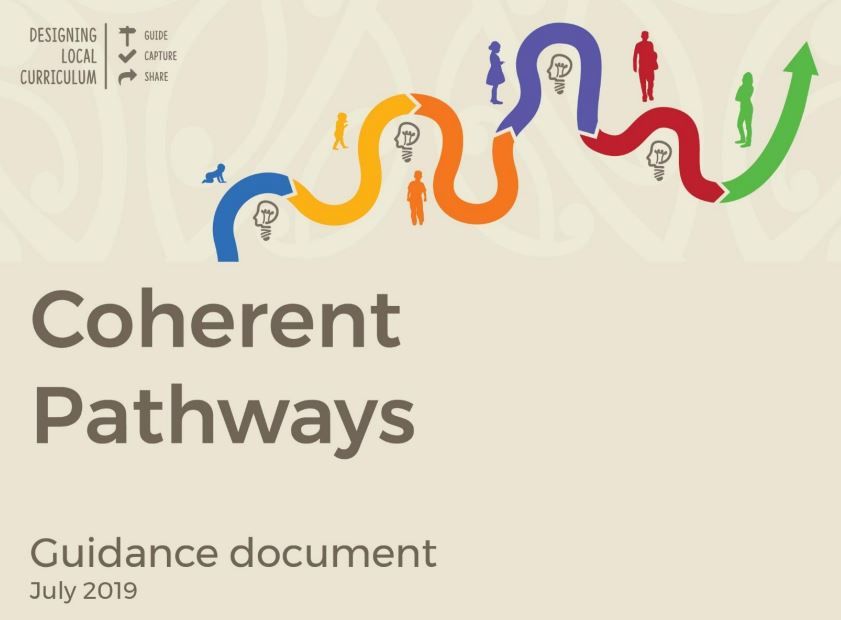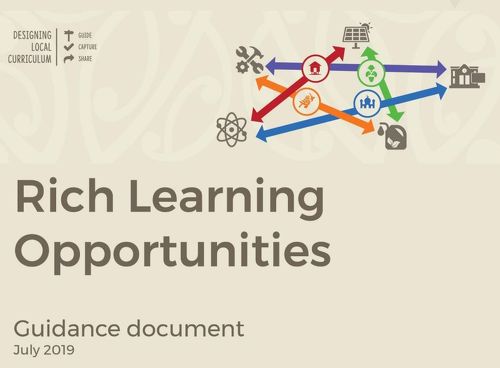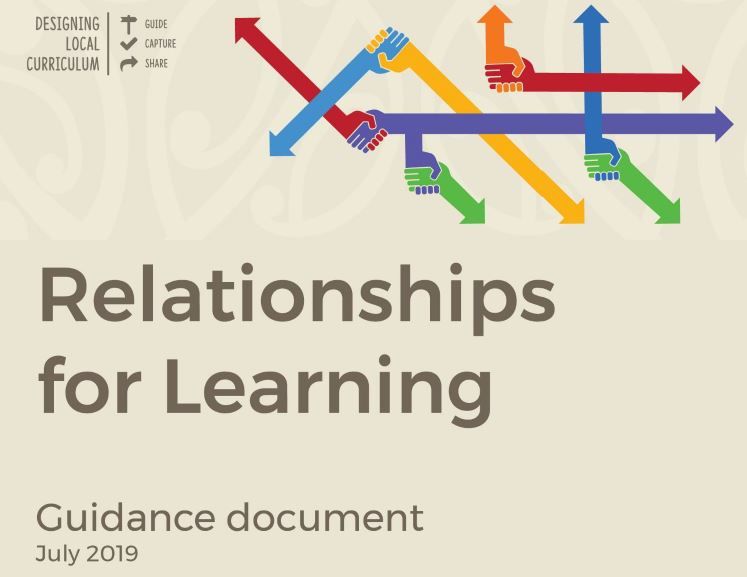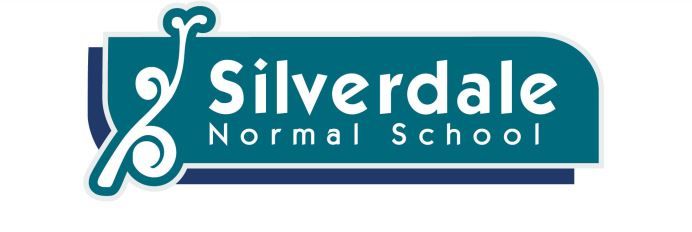.
“Success Today, Success Tomorrow, Success Together”
Localised Curriculum
Localized Curriculum underpins place-based learning. It is the framework that guides best practices for developing "assessments for learning: rather than "assessments of learning".
Learning can be enriched by strategically designing opportunities for ākonga that utilised the knowledge, skills, and abilities that their community sees as critical. You can do this in your school, kura, as a collective through your Kāhui Ako and by working with key stakeholders (Businesses, Community Organisations, local government as well as your Iwi and or hapu).
Within this page are resources that will assist with your engagement with the community and planning of assessments for learning.
What are rich opportunities to learn?
Rich opportunities to learn are carefully designed to increase the breadth, depth, and complexity of the learning experiences with which ākonga engage as they progress along their learning pathways. They are
designed to support ākonga to contribute to their
communities in ways that build on and strengthen both community and ākonga capabilities.
Why design them?
Engaging in rich opportunities to learn from and with their community supports ākonga to:
• understand their community as a system with social, cultural, political, and economic dimensions
• apply their learning in authentic contexts
• experience belonging to the wider community
• learn from and with role models that they can look up to and respect and who believe in them
• be recognized for their contributions as community members.
Learning is not only about what happens within early childhood, school, or kura settings to prepare ākonga for the future; it is also about ākonga being actively involved in the community they live in right now.
CLICK ON THE IMAGE FOR MORE INFORMATION
The Relationships for Learning Tool helps you strategically identify the community relationships that can support the learning of all ākonga in your setting. It does so by providing a process for classifying these relationships into different types and for considering the purpose of each relationship.
The tool focuses on your setting relationships with individuals1 and groups whose roles or expertise offer a potential resource for learning. Each of the settings within the setting already has its own network of relationships. This tool enables you to build upon and sustain these relationships as a community-wide network that extends beyond the network of each individual setting.
You might take a team approach to relationship building or you might appoint one of the cross-school teachers to a designated community liaison role.
CLICK ON THE IMAGE FOR MORE INFORMATION

Once you have an idea about what the communities aspirations are for their akonga, the Coherent Pathways Tool helps you think strategically about the transition points. It is designed to help you identify the learning focuses and capabilities "your community believes are too important to leave to chance". You can specify what these should look like at critical transition points.
This tool provides transition vision statements that you could replace and/or extend the current ones. It also provides ideas to help you discuss, capture and share the ākonga capabilities that support your communities vision by:
• shaping the collaborative design and implementation of rich learning opportunities.
• provide ākonga and all who support their learning — teachers, parents, whānau, and the wider community with a clear, shared view of important markers regarding assessment for learning.
CLICK ON THE IMAGE FOR MORE INFORMATION
LOCALISED CURRICULUM IN ACTION
Silverdale Normal Primary School has been working with the University of Waikato, Ngāti Wairere (Wiremu Puke) & Ngāti Haua (Adam Whauwhau) to develop an integrated localized curriculum. This has led them to incorporate placed-based learning which provides a rich learning context for ākonga to engage with.
CLICK ON IMAGE FOR MORE INFORMATION
USEFUL RESOURCES
Education Gazette talks to members of Te Tai Whanake ki Tauranga Moana Kaitiaki Group about how schools and iwi are working together to create a localised curriculum resource that can be used across all schools, kura and early learning centres in Tauranga Moana.
From 2023, Te Takanga o Te Wā and Aotearoa New Zealand’s histories will be part of all kura and schools’ marau ā-kura and local curriculum.
The stories and histories relating to your school’s geographic location will assist you to instill a deeper sense of personal identity and belonging for every student. Focusing history learning in a familiar place allows assumptions to be challenged and new perspectives to be explored.
While you may choose to show the links between local, national, and global history, place-based history also acknowledges the different experiences of Māori across Aotearoa, and allows students to explore local tikanga and the events that have shaped their own community.
Ngāti Hauā's very own Professor Wally Penetito connects the localized curriculum with place-based education by discussing three strands:
1. a place-based curriculum that lets students examine knowledge and events from where their feet stand.
2. a place-based pedagogy that takes into account the Tikanga of the community you are teaching within;
3. the idea of challenging your own “taken-for-granted” worldviews.



